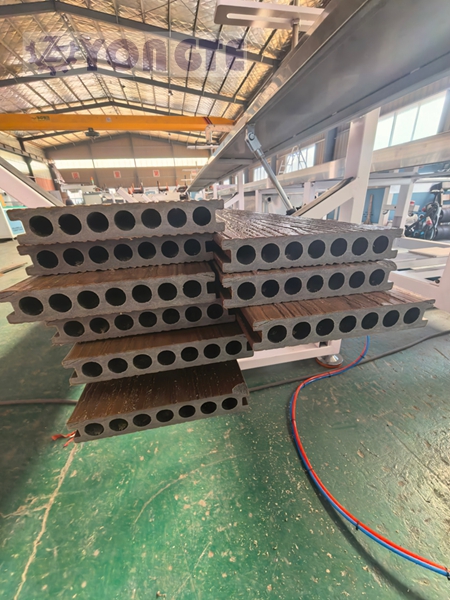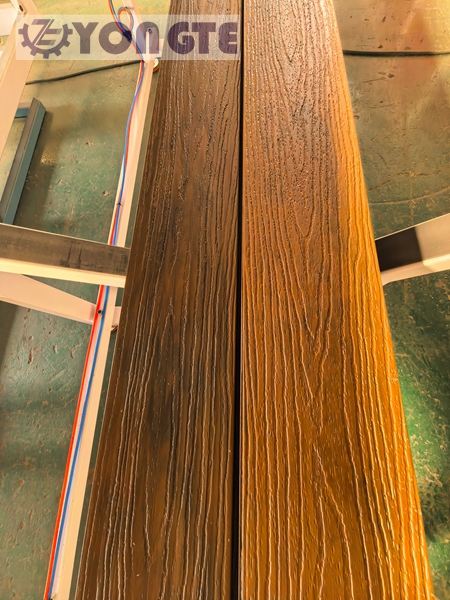Yongte Plastic Machinery Completes Upgrade of Its 3D Online Embossed Wood-Plastic Flooring Production Line, Emphasizing Its Advantages as a Solid Wood Alternative
Yongte Plastic Machinery recently completed a key upgrade of its 3D online embossed wood-plastic flooring production line, further strengthening the comprehensive advantages of wood-plastic products as a solid wood alternative. As a company long-time manufacturer of wood-plastic equipment, Yongte focused on improving process stability and finished product aesthetics, making the wood-plastic flooring look and feel more like real wood while fully leveraging its material properties.
According to Yongte's technical team, this upgrade primarily focused on mold precision and process control systems. Previously, the industry often encountered issues with 3D embossing processes, such as uneven texture depth and surface warping. Through repeated adjustments and gradual optimization of mold design and temperature control parameters, they ultimately achieved texture reproduction exceeding 95%, and the product qualification rate jumped from 92% to 98.5%. This production line is now capable of reliably processing wood fiber and environmentally friendly HDPE composite materials, achieving embossed textures up to 2–3 mm deep. Whether it's the rugged texture of oak or the delicate texture of walnut, the texture and visual effect are highly reproducible, making the feel and visual effect virtually indistinguishable from the real thing.

Compared to solid wood floors, the wood-plastic flooring produced by this production line offers significant advantages in user experience. Solid wood floors require considerable care, with annual waxing and maintenance costs alone accounting for nearly 10% of the initial price. They are also susceptible to humidity and temperature, leading to deformation and even insect infestation, and typically require replacement after just ten years. WPC flooring, on the other hand, can be kept clean with just plain water, reducing maintenance costs by more than half. Its water absorption rate is 34% lower than traditional WPC products, its flexural strength is 26% higher, and its surface Mohs hardness reaches level 5, extending its overall service life to over 20 years. Crucially, it eliminates formaldehyde emissions at the source and is recyclable, significantly surpassing the traditional model of solid wood's reliance on forest resources in terms of environmental performance. It has now passed the latest national green building material certification.
This type of environmentally friendly wood-like building material is currently experiencing rapid growth. An industry report predicts that by 2025, the Chinese wood-plastic flooring market will exceed 30 billion yuan, with a compound annual growth rate expected to remain around 15%-20% over the next few years. In the home furnishing sector in particular, the annual demand for zero-formaldehyde wood-like materials has exceeded 20%. Driven by the dual carbon emissions targets and consumption upgrades, companies like Yongte have capitalized on technological upgrades to perfectly match this market opportunity. Their wood-plastic flooring is now used not only in residential applications but also in shopping malls, kindergartens, and outdoor terraces. They have also added six customizable textures to meet the personalized needs of diverse customers.

The general manager of Yongte Plastic Machinery noted that this upgrade represents more than just a technological evolution; it represents a proactive response to market trends. He stated that the company will continue to enhance the customization capabilities of its production lines to better adapt its wood-plastic products to diverse application scenarios. Industry observers also believe that as this type of production line technology matures, wood-plastic flooring is gradually surpassing solid wood products in terms of cost-effectiveness and practicality. Currently, China's wood plastic products account for 35% of the world's exports. Infrastructure construction in emerging markets such as Southeast Asia and Africa will bring greater development space to this field.